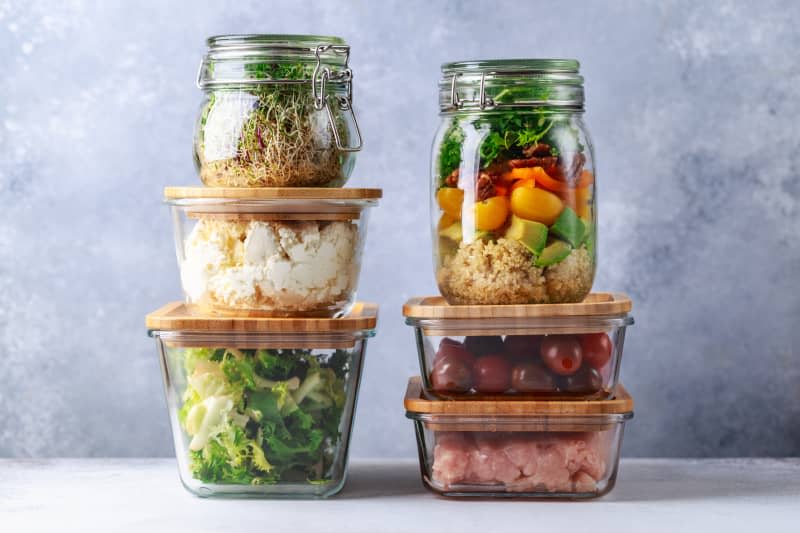The Big Problem with Meal Prepping That No One Talks About (And Is Costing You Money!)

If your social media feeds are full of aesthetically pleasing home and mesmerizing ASMR (autonomous sensory meridian response, or videos that make your spine tingle) cleaning reels, you’re not alone. From Konmaried dresser drawers to rainbow-ified refrigerator interiors, these kinds of videos turn mundane homekeeping tasks into veritable works of art. And while the videos themselves can be inspiring or at the very least voyeuristic (who doesn’t want to open their fridge to that?), they can also be problematic, especially when food is involved.
Of course, there’s the issue of attainability — social media is not real life, and striving for that picture-perfect fridge with only chic packaging and stylish storage containers can not only be costly, but a waste of time and energy. And popular food-prep videos that show washed and cut produce, placed in the fridge ready to eat or cook with, are especially misleading, and can also be extremely wasteful.
While an ASMR video showing a pleasing set of washed and prepped fruits and veggies might not lead to an all-out emulation of that enviable rainbow fridge, it might inspire you to make your days and meal prep times more simple by pre-prepping strawberries for an easy snack, or chopping those onions all at once for the week’s dinners. But here’s why you shouldn’t.
The Problem with *Too Much* Meal Prepping
Meal and food prepping everything as a strategy can work — but only if you know you’re going to use this prepared produce fast enough. If you aren’t going to eat it in that limited window, you’ll be wasting time and money, because prewashed and precut produce spoils way faster than unwashed, uncut produce. This is why Colorado State University Extension advises, you should wait to wash your produce, noting that “washing produce before storing may promote bacterial growth and speeds up spoilage, so it is often recommended to wait and wash fruits and vegetables just before use.”
Keeping produce from exposure to air and moisture generally makes it last longer, which is why airtight food storage is a kitchen organization must. That’s also why whole fruits and vegetables last longer than sliced ones; washing and cutting exposes them to both moisture and a whole bunch more air because of the increased surface area. In contrast, according to the University of Wyoming Extension, “Most produce will last about 5 days after being prepped stored in an airtight container.” Conversely, a banana, lime, or tomato might last over a week sitting on your kitchen counter (or in your refrigerator unsliced).
Some produce is especially susceptible to spoilage when pre-prepped. The University of Wyoming Extension advises against cutting apples, pears, bananas, and avocados ahead of time because they brown quickly. (Also check out The Kitchn’s Guide to Storing Fruits and Vegetables for more detailed information on prolonging the life of all kinds of produce.)
Of course, the downsides of prewashing and cutting your produce must be weighed against the increased likelihood of reaching for and eating produce that’s already prepped. As always, arming yourself with knowledge about the pros and cons of all the options helps you make the choice that’s best for your unique situation. Ultimately, do what works best to save you time and energy and eat your food before it goes bad — whether or not it’s Instagram-worthy.

